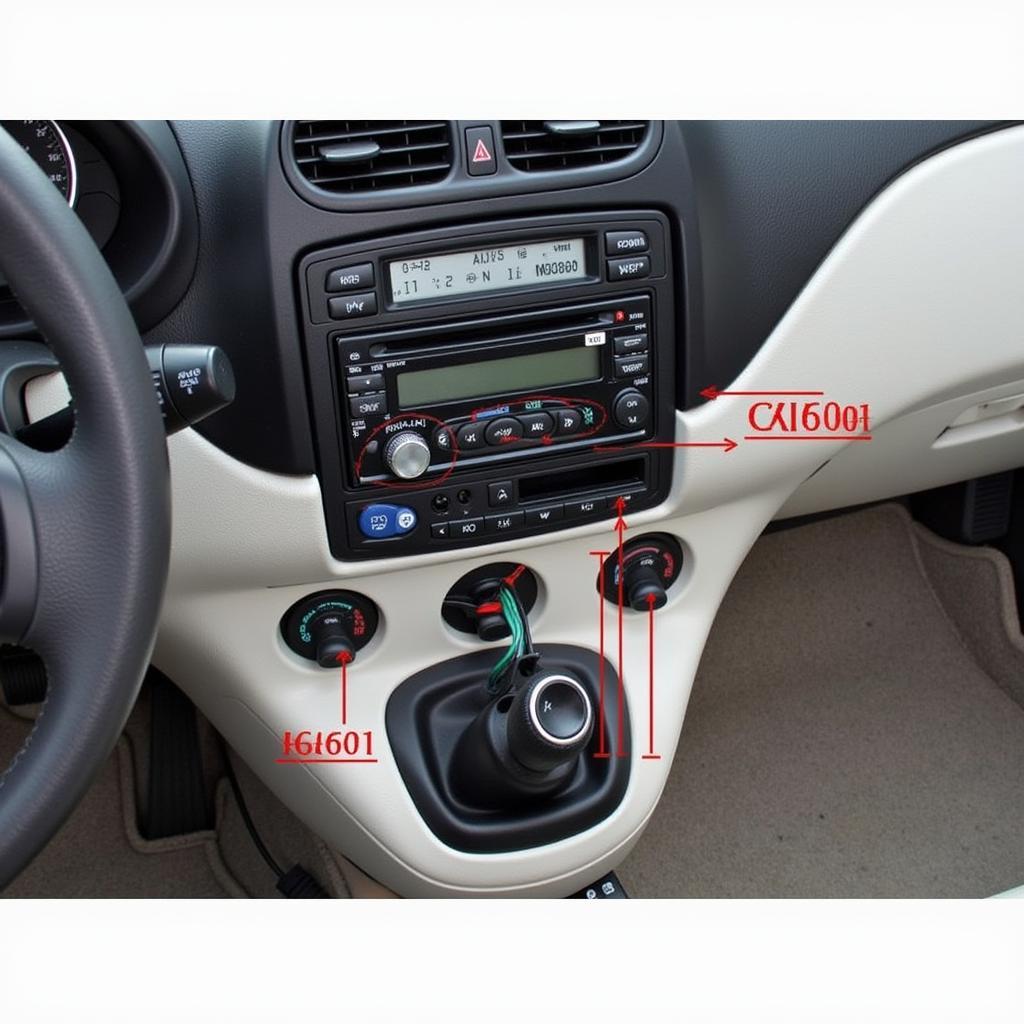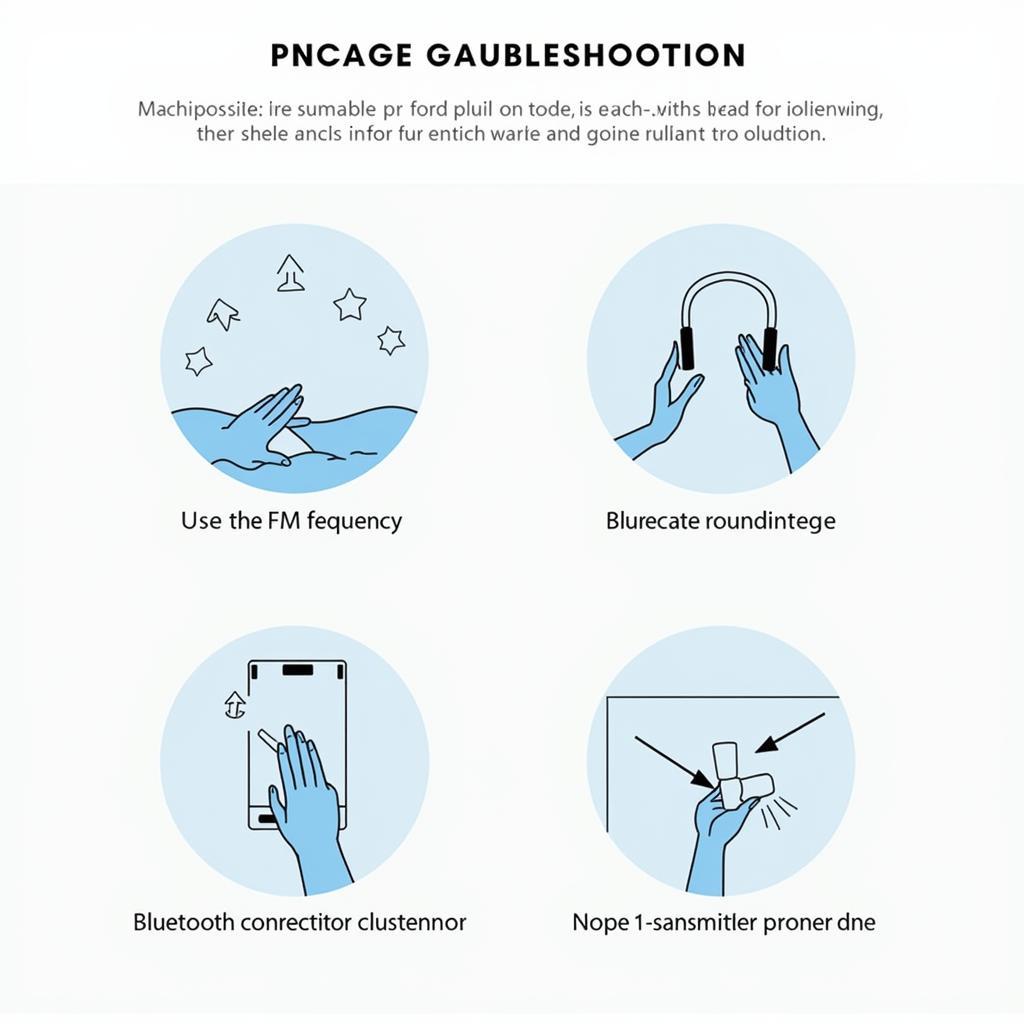The brake fluid warning light on your VW Passat B6 dashboard is a crucial safety indicator that you should never ignore. It typically signals a problem with your car’s braking system, potentially compromising your ability to slow down or stop safely. This comprehensive guide delves into the common causes of the VW Passat B6 brake fluid warning light, how to diagnose the issue, and the necessary steps to rectify it.
Understanding Your Passat’s Brake Fluid Warning Light
The brake fluid warning light, often depicted as a circled exclamation mark (!) within parentheses or a similar symbol resembling a reservoir with a fluid level indicator, illuminates on your dashboard when the brake fluid level drops below a safe threshold.
This warning light serves as an early alert system, providing you with valuable time to address the issue before it escalates into a dangerous situation. Ignoring this warning light could lead to brake failure, putting you and others at risk.
Common Causes of a VW Passat B6 Brake Fluid Warning Light
There are several reasons why your Passat B6’s brake fluid warning light might illuminate:
- Low Brake Fluid Level: The most common culprit is a low brake fluid level, often due to worn brake pads or a leak in the system.
- Worn Brake Pads: As your brake pads wear down, the brake calipers need more fluid to engage the brakes, leading to a lower fluid level in the reservoir.
- Brake Fluid Leak: A leak anywhere within the braking system, including the master cylinder, brake lines, hoses, or calipers, can cause a rapid loss of brake fluid.
- Faulty Brake Fluid Level Sensor: In some cases, a malfunctioning brake fluid level sensor might trigger the warning light even if the fluid level is adequate.
Diagnosing the Brake Fluid Warning Light
If your Passat B6’s brake fluid warning light illuminates, it’s crucial to diagnose the root cause:
- Check the Brake Fluid Level: Safely park your car on a level surface and locate the brake fluid reservoir. Refer to your owner’s manual for its exact location. Carefully open the reservoir cap, noting the “Min” and “Max” markings on the side. The fluid level should fall between these two lines. If it’s below the “Min” mark, your brake fluid level is low.
- Inspect for Leaks: With the engine off, carefully examine the area around the brake fluid reservoir, brake lines, hoses, and calipers for any signs of leaks. Look for wet spots, drips, or puddles of brake fluid. Brake fluid is typically clear to light yellow but can appear darker with age or contamination.
- Assess Brake Pad Wear: While checking for leaks, visually inspect your brake pads through the spaces between the wheel spokes. If the pad material is less than 1/4 inch thick, it’s time for a replacement.
What to Do When Your Brake Fluid Light Comes On
1. Do Not Drive If…
- You notice a puddle of brake fluid beneath your car.
- Your brake pedal feels spongy or goes all the way to the floor.
- You hear unusual grinding or screeching sounds when braking.
In these situations, driving your Passat B6 is extremely dangerous. Immediately contact a qualified mechanic for towing and repairs.
2. If it’s Safe to Drive…
- Add Brake Fluid: If you identify a low brake fluid level and there are no visible leaks, carefully add the correct type of DOT-rated brake fluid to the reservoir, following the instructions in your owner’s manual. Avoid overfilling.
- Schedule an Inspection: Even if you temporarily resolve the issue by adding brake fluid, it’s essential to schedule an inspection with a qualified mechanic to diagnose and address the underlying cause of the low fluid level. They can identify potential leaks, assess brake pad wear, and check for other related problems.
VW Passat B6 Brake Fluid Warning Light: Prevention Tips
Regular maintenance plays a vital role in preventing brake system issues and ensuring your safety on the road. Here are some proactive measures you can take:
- Regular Brake Fluid Flushes: Brake fluid is hygroscopic, meaning it absorbs moisture over time, reducing its effectiveness and potentially damaging brake components. Consult your owner’s manual for recommended brake fluid flush intervals or have it done at least every two years.
- Timely Brake Pad Replacements: Worn brake pads are a leading cause of low brake fluid levels. Replace your brake pads as soon as they reach their minimum thickness or exhibit signs of wear.
- Routine Brake Inspections: Include a brake system inspection during your regular car maintenance checks. A qualified mechanic can identify potential issues before they escalate into major problems.
Expert Insight
“Never underestimate the importance of your car’s braking system,” advises John Miller, a seasoned automotive technician with over 20 years of experience. “The brake fluid warning light is a serious indicator that should never be ignored. Addressing the issue promptly ensures your safety and prevents costly repairs in the long run.”
Conclusion
Addressing the VW Passat B6 brake fluid warning light promptly is paramount for your safety and the well-being of your vehicle. Understanding the common causes, knowing how to diagnose the issue, and taking preventive measures can help you avoid potentially dangerous situations and keep your Passat B6 running smoothly. Remember, when it comes to brakes, erring on the side of caution is always the safest approach. If you encounter any issues, don’t hesitate to seek professional assistance from a qualified mechanic.



